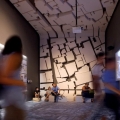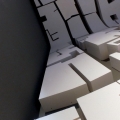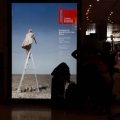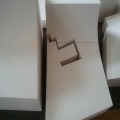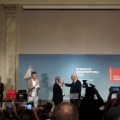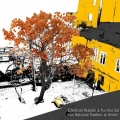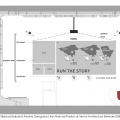Location: Venice, Italy
Curators & Architects: Behzad Atabaki, Parshia Qaregozloo
Client: Ministry of Roads & Urban Development
Function: Iran National Pavilion At Venice Architecture Biennale 2016
Project coordinators: Golshan Narimani, Ali Khodaverdi, Yasaman Lashgari
Completion date: 2016
Total area: 32m2
The Iran national pavilion at the 15th Venice Architecture Biennale has been curated by Parshia Qaregozloo and Behzad Atabaki.
Titled ‘rewind, play, fast-forward’, the project was selected from 148 proposals during a two-stage judgment procedure.
Over the past century, social, political and economic circumstances in Iran have led to reduced living standards. Contributing factors include vast immigration to big cities and their suburbs, and urban plans that do not take into account human and social participation. a major part of the regions in these cities have been evacuated due to low living quality, with many in danger of being destroyed and turned into commercial centers.
Two years ago, the curatorial team began its research. In the first place, their aim was to obtain a precise understanding of the aforementioned issues in order to understand the problems. The method is based on immediate contact with citizens, talking to residents and finding simple solutions in order to improve living spaces in small neighborhoods, alleys and streets. They believe in the importance of close contact with active local groups and associations in order to develop better plans implemented by the citizens themselves.
During the research stage, the team encountered few examples of resistance to live and innovative resistance facing danger; such movements — though rare — still exist and develop slowly. There are instances of individual and personal living spaces in private and semi-private places. Local cooperation in order to prevent the destruction has been effective to some extent, however, the destructive power of other external elements has always pushed them into inescapable situations. These movements have only been successful whenever they have managed to join one another and work with NGOs and local associations.
The pavilion is designed based on a representation of urban schemata of buildings in a reverse order, stretched from the ceiling to the walls and parts of the floor. The form is chosen in order to manifest the reverse process of reviving these residential neighborhoods. The approach is based on not returning to the past, but establishing connections between various social and local groups in order to share main problematic issues and cooperate with each other by benefiting from small successes.
The main interactive wall of the pavilion consists of a video projection with a touch screen below. When visitors enter, according to the area touched, one of the stories is selected and its film is screened. Meanwhile, green points of this story will blink on the interactive screen. If the visitor touches these, then more detail will be presented.


